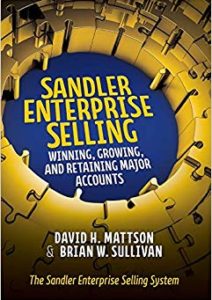It’s October – the month of ghouls, goblins, and Halloween. Scary stuff, for sure. There is an old Indian saying that speaks to the criticality of knowing the truth about the frightening things we face – “In the dark of the night, every cat’s a leopard”. In our world of selling, the point is that understanding your adversaries is nothing short of a survival skill and these sage words allude to the criticality of having meaningful insights into the competitors we face on a daily basis. We must know them and account for them. But what do we have available today to help us with that vital research?
Competitive analysis typically comes in one of two flavors. First, there’s the competitive outlook used in business planning to prove the viability of an initiative. Interesting, but usually quite general and not helpful in tracking a competitor in a specific deal. The other variety involves extensive investigation and a ton of data, providing a deep and wide view but lacking the focus needed for specific selling situations. And even if you had the time, energy and resources for such deep competitive dives, much of what you discovered would simply be unneeded documentation.
So, what can you do? How can you turn on the lights to see if the moving shape in the October darkness is a leopard or a house cat?
Start with a framework to identify and understand the ten most important competitive focus areas:
- Facts
- Products/Services
- Performance
- Markets
- People
- Positioning
- Value Proposition/Pricing
- Accounts
- Strengths/Weaknesses
- Plans
In sales, we love frameworks, don’t we? In this simple one, the key is to target only the information that is particularly relevant to a specific competitor in a specific situation, typically a pursuit. That type of focused information is, simply put, impactful. And to win in selling, you must have focus. Reviewing mountains of information that are publicly available can be very distracting and the research involved can be a full-time job. Sales teams can’t afford to spend their time getting educated by information that’s not on the critical path. The magnifying glass must be painstakingly pinpointed on information that matters. Information that drives wins. Nothing more, nothing less.
For an example, let’s consider on the “People” section in the suggested framework above. In many competitive analysis templates, data-driven directives propose extensive analysis of competitive organization charts and research into the firm’s top executives. If those high-level executives are truly relevant to your specific deal and, as such, have a direct impact on your success, it absolutely makes sense to target your research on them. But the truth is that it’s highly likely there are others in the competitive firm who will have a greater impact on the deal. Maybe a competitive sales rep you frequently face off against or a subject matter expert with deep experience in the prospect account’s industry. If these are the individuals who are specifically relevant in the pursuit, then your ability to understand them and strategize against them is critical. In fact, doing so may well dictate the deal’s outcome. And remember – only you know who is most relevant, who is most impactful. Identify them and work to understand them. But don’t dwell on understanding everyone in the organization and certainly not those targeted as “important” by some boilerplate competitive analysis template. And that same mindset regarding the true relevance of information applies to the other nine areas of the framework as well.
Think about it. How helpful would it be to have a laser-focused understanding of your key competitors in a specific pursuit? No extraneous information, only what’s truly impactful. Streamlined and targeted to increase your chances of winning. And the ten detail areas in the framework cover a wide landscape, touching on most key competitive topics. Some areas, of course, will be less relevant than others in specific deals, so they should get less of your focus or perhaps none at all. Doesn’t that make sense? The frame of reference should be based totally on you and your sales team’s judgment and should not shoehorn your reality into some template. That just doesn’t work. After researching the areas that are relevant to the specific competitor and deal, then it’s time to move on to actions. In winning pursuits, it’s all about forward motion. No event should represent a snapshot in time. Everything must look ahead.
As such, you craft four or five realistic actions resulting from your work in the framework’s sections. Specific, date-bound actions, including RACI responsibility designations. And then, of course, you act.
Competitive analysis is critical, but it must be conducted in a streamlined and practical way. Because at the end of the day, it’s not the research that matters. It’s the impact. So, follow the framework, turn on the lights and identify whether you’re facing a leopard or a house cat. And don’t be scared.






Comments